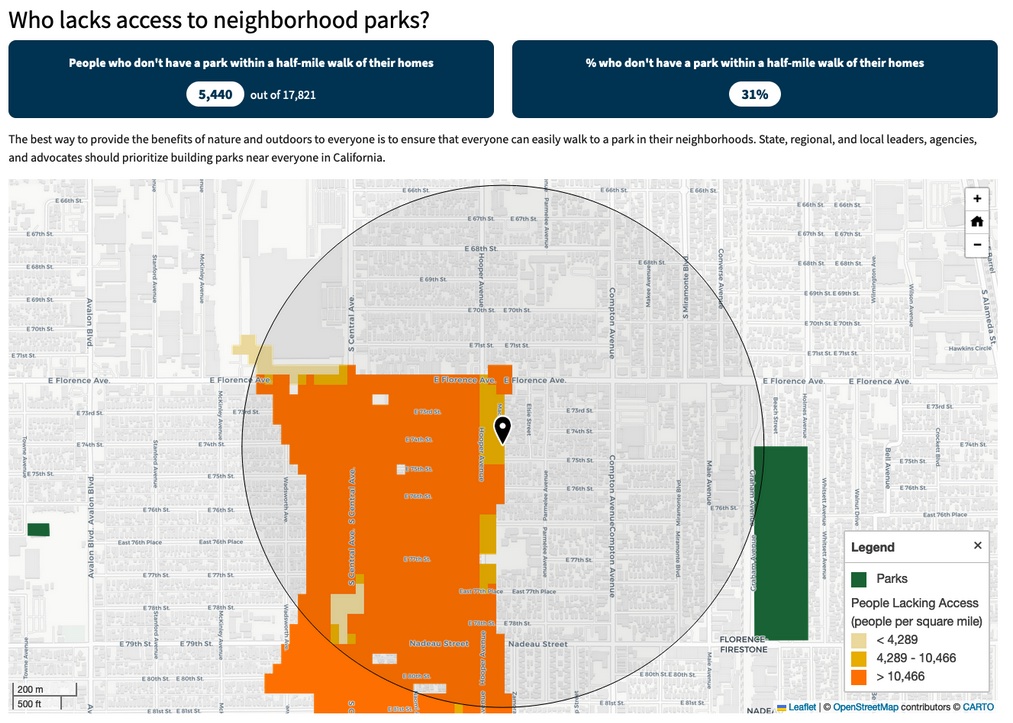How To
Guide for First-Time Users
The core functionality of this website is on each of the individual state pages, where you can get both broad overviews and highly detailed information about park access and demographics.
Before you get started, make sure you log in with your email address. That will give you access to the state pages. No password is required.
Then use the "Find a State" menu if the site navigation to select a single state page, like California.
The first view shows data about everyone in California who lacks access to a neighborhood park within walking distance of their home. You can quickly see that 22% of Californians, or 8,532,733 people, lack a neighborhood park within walking distance. We define neighborhood parks as parks smaller than 100 acres that are classified as open access (anyone can visit).
As you move down the page, you will find a range of recommendations, maps, charts, and links to support better understanding of access challenges across the entire state. You can also select a specific location by address or by clicking on the map to understand access within a half-mile circle of that location.
The page is broken up into the following sections:
- Access Overview
- Solutions Overview
- Explore Places of Interest
- Who lacks access to neighborhood parks?
- How can regional parks and open spaces help? (inactive when a whole state is showing, active when a specific location is selected)
- Support improved transportation to regional parks
To select a specific location, use the “Explore Places of Interest” section to search for an address or place a point on a map.
This will filter all the data below to the circle shown on the map, and also produce a shareable URL in your browser bar, like this: https://parkaccess.org/state/california/?type=latlng&address=&lat=33.97291030478378&lng=-118.25135284207903
Here’s an example map under “Who lacks access to neighborhood parks?”

We can see here that this location in Los Angeles has a relatively higher population of people without a park nearby (31%) than the state overall (22%). Below this map, we can also see how this area compares to the state overall for people with low income, very low income, and other variables. Each variable is identified by the specific Census field ID we used for full clarity of what data we are using.
Under “How can regional parks and open spaces help?”, we list the nearest regional parks (those larger than 100 acres) near this location, and we identify the agency that manages the parks and which state and congressional legislative districts they fall into. This information can be useful to advocates pushing for more programming designed to support access by people who lack parks within walking distance of their homes. We provide a link to resources for each state to support improved programming.
Under “Support improved transportation to regional parks,” we list based Census data about people who have limited access to a car, and those wo lack car access and also lack a park within walking distance.